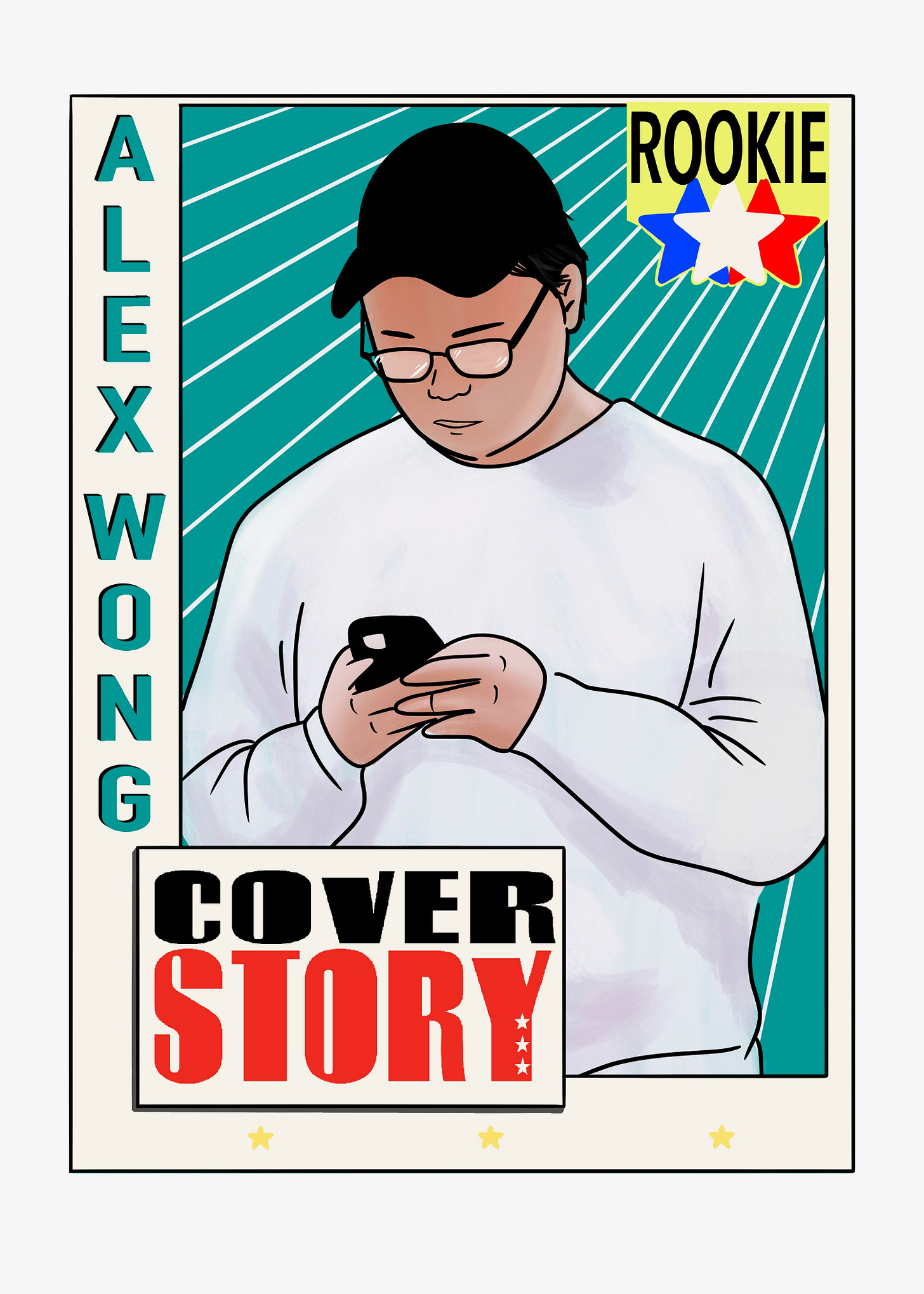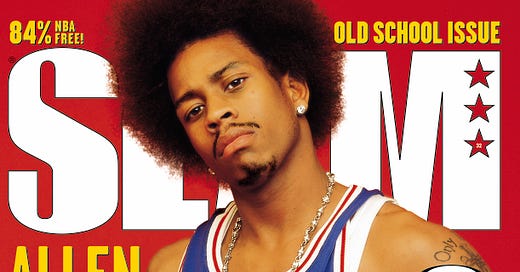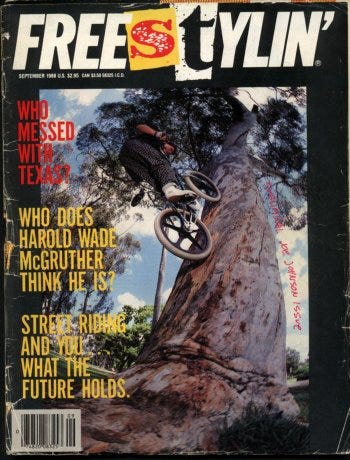Sidebar: Allen Iverson, "Soul on Ice," and a trip to The Diamond District
Also: Russ Bengtson's favorite magazine covers.
Hi everyone. Welcome to my newsletter companion to “Cover Story,” a basketball book I wrote which is set for release on October 19th and is available for pre-order here. If you want to tell your followers about my book, feel free to share this tweet or this Instagram post. If you’re not a newsletter subscriber, click here to make sure you get every post in your inbox.
When I started the newsletter and asked for your favorite magazine covers, SLAM’s Allen Iverson “Soul on Ice” cover was the most frequently submitted choice. That didn’t come as a surprise to me at all. This is the first cover many people think of when it comes to SLAM.
As I started to put together each of the chapters in “Cover Story,” it became apparent the more popular the cover the more challenging it was to tell the story. There’s a fine line between finding a unique angle to a previously-told story while also not skipping over the essential details even if they’ve already been discussed.
This was the challenge for the “Soul on Ice” chapter. Faced with this problem, I would inevitably ask myself the same question: what is the larger story you’re trying to tell with the magazine cover? For specific chapters, the focus was on the cover photo. Other times it was the cover line. Or the cover story. Or all three.
The “Soul on Ice” cover was about all of those things, but it was also about contextualizing what the cover meant against the backdrop of how Allen Iverson was being discussed and portrayed by the mainstream media. It was about the uncomfortable and often-times irresponsible relationship between predominantly-white publications and the Black athletes they covered.
The “Soul on Ice” chapter ended up being about many things, including:
Rick Telander uncovering the league’s attempt to airbrush Iverson’s tattoos from a magazine cover
Ron Berler remembering his stint as editor-in-chief of NBA Inside Stuff magazine and how the NBA nixed an Allen Iverson cover pitch
The story of Black Sports magazine and the coverage of Black athletes in the decades prior to the “Soul on Ice” cover
Dennis Page on being a white man running a magazine covering Black athletes
Scoop Jackson on the parallels between Muhammad Ali and Allen Iverson
Tony Gervino and photographer Clay Patrick McBride remembering the details of one of SLAM’s most iconic cover shoots

One part of the “Soul on Ice” story that didn’t make the final manuscript was Russ Bengtson riding with Allen Iverson (who needed to repair a bracelet) to The Diamond District in New York while interviewing Sixers star for the cover story. Bengtson, who wrote the “Cover Story” foreword, by the way, still remembers his “eyes popping open like a cartoon character” when Iverson told him his favorite NBA player was Latrell Sprewell.
“It seemed like such a gimme question,” he explained. “If he said Michael Jordan, it would have been eye-rolling obvious, but you wouldn’t be able to argue that. This was after Spree had choked P.J. (Carlesimo). Allen knew it was going to draw some criticism, but he didn’t care. He was going to be honest about anything.”
The “Soul on Ice” chapter covers this level of authenticity from Allen Iverson and how the media portrayed it. The iconic SLAM cover remains the defining image of his career, and I hope after reading my book you’ll gain an even greater understanding of why.
I recently hit up Russ Bengtson, who wrote the foreword to “Cover Story” by the way, for his favorite magazine cover picks. The first one is a Freestylin’ cover (pictured above) featuring Eddie Roman.
“It was a subversive, funny, no-rules magazine that just happened to be about BMX,” he explained. The magazine provided direct inspiration for SLAM. “One thing I directly swiped from Freestylin’ was putting a random frame into a video sequence,” Russ, who says his BMX message board screen name was Not Eddie Roman, continued. “I definitely put a shot of Shawn Bradley into at least one Slamadamonth freeze-frame reel.”
A few weeks ago, I wrote about how Big Brother magazine influenced Tony Gervino while he was SLAM’s editor-in-chief. Russ also picked a magazine cover from the skateboarding magazine (pictured above) as one of his all-time favorites.
He remembers a period spanning the late-1990s and into the early-2000s when (aside from buying sneakers) he would make weekly trips to Virgin Megastore at Union Square to buy CDs before heading to a Flatiron District newsstand to pick up his favorite magazines. They included FourFourTwo, When Saturday Comes, FHM, and Maxim (editor’s note: Russ, thank you for confirming every man subscribed or purchased Maxim growing up).
Russ wasn’t a skater, but he would pick up the occasional Thrasher magazine. “But Big Brother,” he said, “Big Brother was something else. Skateboarding was the gravitational field, but they also pulled in everything that orbited it. They took irreverence to its logical extreme, then went full-on illogical with it. They say that the Velvet Underground wasn’t all that popular in their prime, but all of their fans went on to form bands. I feel like Big Brother was that—maybe their circulation wasn’t crazy, but everyone who read it went on to create.”
As for the specific cover above: “I remain jealous of their willingness to run just ONE cover line. Image is everything.”
The third and final pick is this Ice-T Rolling Stone cover. The context of this magazine cover photo is explained in “Cover Story,” so I’ll avoid rehashing the details here, but it is an incredible idea executed by photographer Mark Seliger.
“I think there was a period—a long period, maybe with a gap in between—when Rolling Stone was the most important magazine in America, if not the world,” Russ said. “I was too young for the Hunter S. Thompson era, although he eventually got me anyway, but the period when Mark Seliger was responsible for the photography was right in my formative wheelhouse.”
As for the Ice-T cover photo: “It was also very instructional as to how much you could say on a magazine cover with an image alone.”

One more thing… for media people who I’ve reached out to for addresses, the supply chain for everything is messed up right now (here’s an excellent Twitter thread that explains it all), so those advance copies probably won’t arrive for a few more weeks. Thanks for your patience!
I’ll be back on Friday with Nathaniel Butler’s favorite magazine covers and we’ll be doing a Michael Jordan print giveaway.
Thanks for reading the newsletter. Feel free to subscribe if it’s your first time reading. You can pre-order “Cover Story” here and find me on Twitter and Instagram. Email me if you want to chat.







